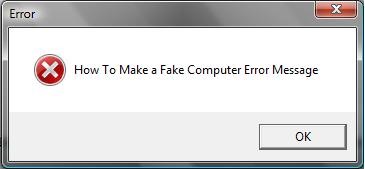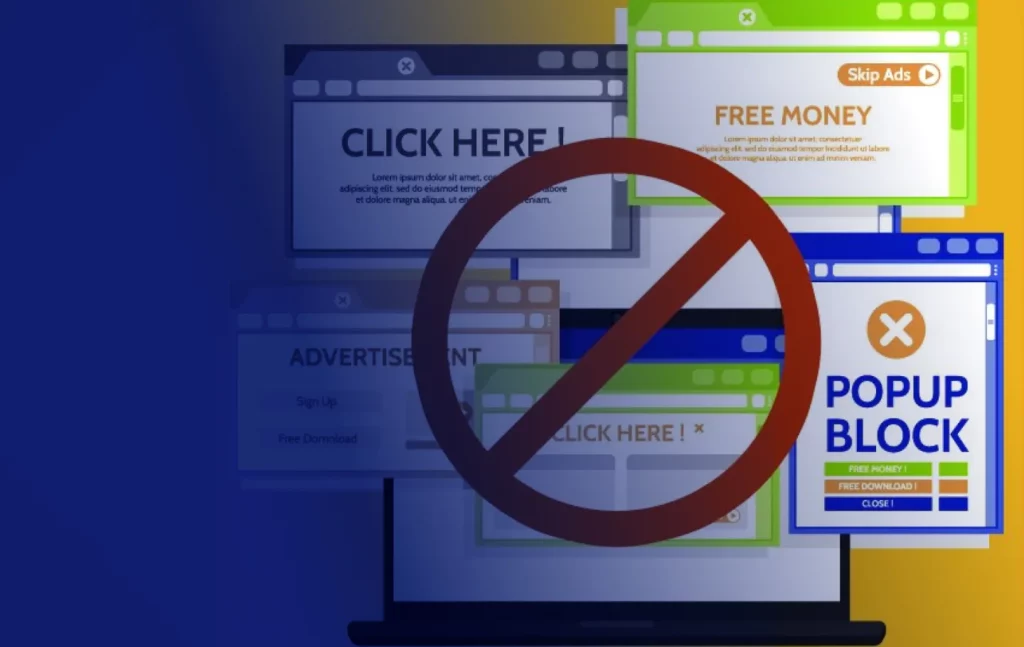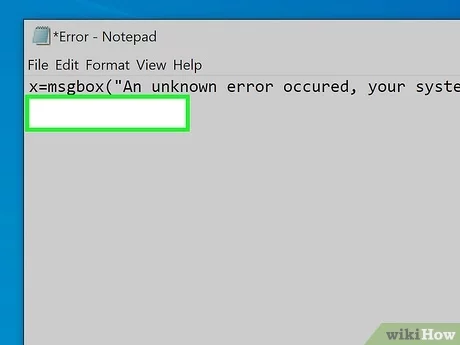In today’s interconnected digital world, encountering error messages while browsing the internet or using software is not uncommon.
Making a fake error message is like writing a message that looks like a real mistake, either by using special websites or writing it yourself, but be careful not to upset anyone with it.
In this article, we delve into the world of fake error messages, exploring their prevalence, the tactics used by scammers, and the risks they pose to individuals and organizations.
Impact Of Fake Error Messages:
1. User Confusion And Frustration:
Fake error messages can cause confusion and frustration among users. The sudden appearance of alarming messages disrupts their workflow and induces stress.
2. Loss Of Trust:
Encountering fake error messages erodes trust in legitimate systems and software. Users may become skeptical of genuine alerts, leading to delays in addressing issues.
3. Financial Scams:

Some fake error messages deceive users into providing sensitive information or making financial transactions. Scammers impersonate legitimate entities, tricking users into divulging personal details.
4. Malware Infections:
Clicking on links or downloading attachments from fake error messages exposes users to malware infections. Malicious software compromises device security, leading to data breaches and cyberattacks.
5. Disruption Of Business Operations:
For organizations, fake error messages disrupt business operations and productivity. Employees waste time dealing with fake alerts, risking exposure to sensitive information.
Identifying Fake Error Messages:
1. Grammatical Errors And Spelling Mistakes:
Fake error messages often contain grammatical errors or spelling mistakes. Legitimate notifications from reputable sources are typically well-written and free of errors.
2. Suspicious Sender Email Addresses:
Pay attention to the sender’s email address or domain. Fake error messages may come from unfamiliar or suspicious email addresses, whereas legitimate messages typically originate from known sources.
3. Requests For Personal Or Financial Information:
Be cautious of error messages requesting personal or financial information. Legitimate error notifications rarely ask for sensitive details like passwords, credit card numbers, or social security numbers.
4. Vague Language And Generic Claims:

Fake error messages often use vague language and generic claims to create urgency. They may state that your device is infected with a virus or your account has been compromised without specific details.
5. Unexpected Pop-Ups Or Redirects:
Be wary of error messages that appear unexpectedly as pop-up windows or browser redirects. Legitimate error notifications usually occur within the context of the software or website you’re using.
Risks Associated With Fake Error Messages:
1. Malware Infections:
Clicking on links or downloading attachments from fake error messages can lead to malware infections. Malicious software, like viruses or ransomware, may compromise device security, resulting in data loss or financial theft.
2. Data Breaches:
Fake error messages may trick users into divulging sensitive information, leading to data breaches and compromised privacy. Cybercriminals exploit this information for identity theft or unauthorized access to accounts.
3. Financial Scams:
Some fake error messages deceive users into providing financial information under pretenses. Scammers may trick users into sharing credit card details or banking information, resulting in financial losses.
4. Identity Theft:
By exploiting fake error messages, cybercriminals steal personal information for identity theft, leading to financial losses and damaged credit scores.
5. Disruption Of Services:
Fake error messages can disrupt devices, software, or online services, causing system crashes or technical issues, leading to frustration.
Preventive Measures Against Fake Error Messages:
1. Stay Informed And Educated:
Keep updated on the latest cybersecurity threats and techniques scammers use to distribute fake error messages. Regularly educate yourself and your team members about common tactics used in phishing scams.
2. Use Reliable Antivirus Software:
Install reputable antivirus software on your devices and keep it up to date. Antivirus programs can help detect and block malicious software associated with fake error messages, providing an additional layer of defense.
3. Enable Pop-Up Blockers:
Configure your web browser settings to enable pop-up blockers. This helps prevent fake error messages from appearing as intrusive pop-up windows while browsing the internet.
4. Exercise Caution When Clicking Links:

Be cautious when clicking links, especially in unsolicited emails or suspicious websites. Avoid clicking links or downloading attachments from sources you don’t trust or recognize.
5. Verify Error Messages Through Official Channels:
If you encounter a suspicious error message, verify its authenticity through official channels. Contact the software provider directly or visit their official website to confirm the legitimacy of the error message.
6. Practice Safe Browsing Habits:
Adopt safe browsing habits by avoiding visiting untrustworthy websites and refraining from downloading software from unknown sources. Stick to reputable websites and download software only from official sources.
7. Be Skeptical Of Urgent Requests:
Exercise caution when faced with urgent requests for personal or financial information. Legitimate organizations rarely ask for sensitive information via email or pop-up messages.
Reporting Fake Error Messages:
1. Document The Details:
Take note of the specifics of the fake error message, including the content of the message, any associated links or attachments, and the sender’s email address or website URL.
2. Report To The Software Provider:
If the fake error message is related to specific software or an online service, report it directly to the software provider. Most reputable companies have mechanisms for users to report suspicious activity or phishing attempts.
3. Forward Suspicious Emails:
If the fake error message comes as an email, forward it to the company’s official support or security email address. This allows the company to investigate the issue and take appropriate action.
4. Use Browser Reporting Tools:
Many web browsers have built-in tools for reporting suspicious websites or pop-up messages. Use these features to flag fake error messages encountered while browsing the internet.
5. Report To Cybersecurity Authorities:
If you believe the fake error message is part of a larger cybercrime operation, consider reporting it to cybersecurity authorities or law enforcement agencies. They have the resources and expertise to investigate and take legal action against cybercriminals.
6. Share With Online Communities:
Spread awareness about fake error messages by sharing your experience with online communities, forums, or social media platforms. This helps alert others to scams and encourages vigilance among internet users.
How To Create Fake Error Message Text:
1. Choose A Platform:
Decide where you want your fake error message to appear. It could be on a computer screen, a mobile device, a website, or even within an email.
2. Use Online Generators:

There are several online tools and generators available that allow you to create custom fake error messages easily.
These tools typically provide templates where you can input text and customize various aspects of the error message, such as the title, message body, and button options.
3. Design The Message:
Craft a convincing error message that mimics the style and tone of legitimate error messages. Include alarming language or urgent calls to action to make the message more believable.
4. Add Visual Elements:
Consider adding visual elements to enhance the authenticity of the fake error message. This could include using official logos or icons associated with the platform or software being imitated.
5. Test The Message:
Before deploying the fake error message, test it to ensure it looks and behaves as intended. Verify that the message appears correctly on different devices and screen sizes and that any interactive elements function as expected.
6. Deploy With Caution:
If you’re using the fake error message for a prank or demonstration, be mindful of the impact it may have on the recipient. Avoid causing unnecessary distress or confusion, and always disclose the true nature of the message afterward.
Conclusion:
Fake error messages continue to pose a significant threat to users and organizations alike. By understanding the tactics used by scammers and taking proactive measures to protect ourselves, we can minimize the risks of encountering fake errors. Remember to stay informed, exercise caution when browsing the internet, and report any suspicious activity promptly.
Related Questions:
1. How Common Are Fake Error Messages?
Fake error messages are relatively common, especially on the internet, where scammers target unsuspecting users.
2. Can Fake Error Messages Cause Harm To My Device?
Yes, fake error messages can lead to various consequences, including malware infections, data loss, and financial scams.
3. What Should I Do If I Encounter A Fake Error Message?
If you encounter a fake error message, avoid clicking on any links or providing personal information. Report the incident to the appropriate authorities or software provider.
4. How Can I Differentiate Between A Real And Fake Error Message?
Real error messages typically provide specific details about the problem and come from reputable sources. Fake error messages often contain grammatical errors, use vague language, or request personal information.
5. Is There Software Available To Protect Against Fake Error Messages?
Yes, reputable antivirus software can help protect against malware and phishing attempts, including fake error messages.
Read:
